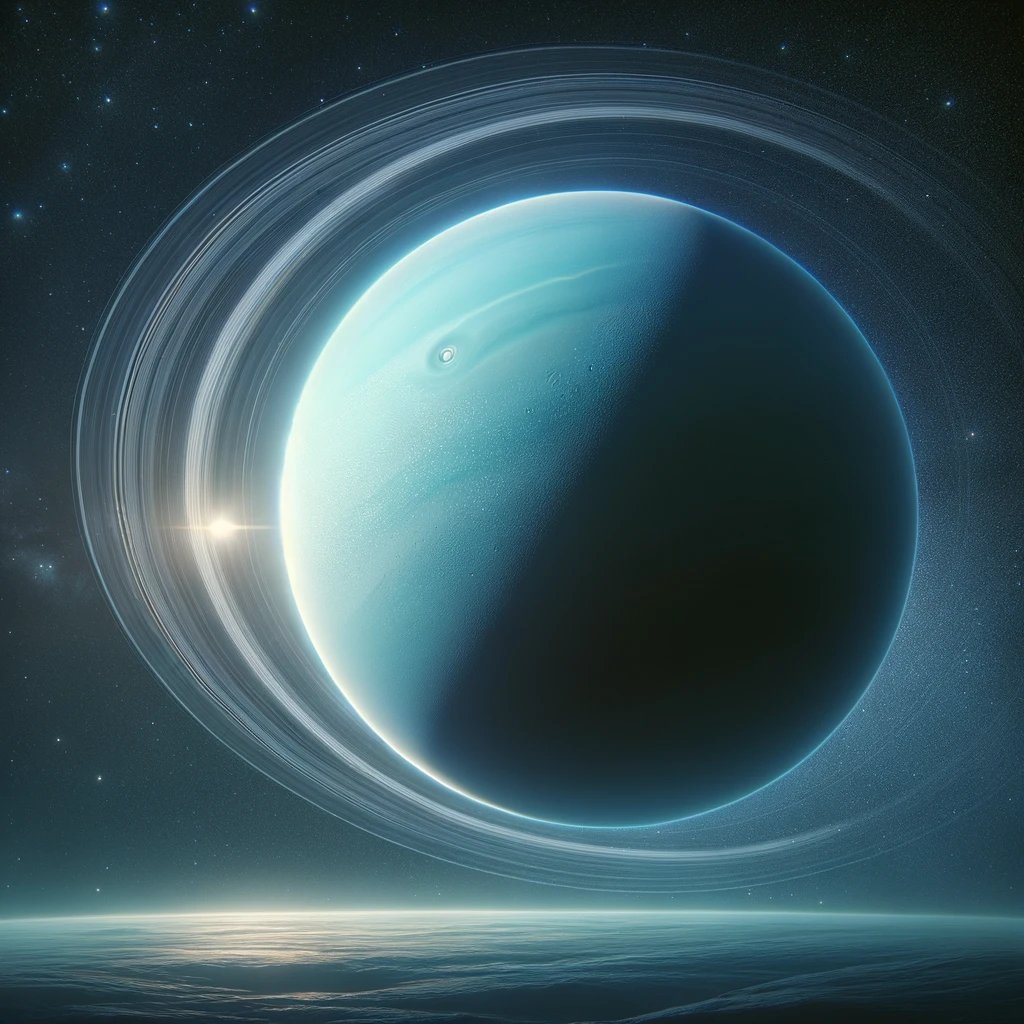The coldest planet in our solar system is Uranus. This icy giant holds the record for the lowest temperatures among the planets, with thermometer readings plunging to a frigid -224°C (-371°F) in its atmosphere. Uranus’s status as the coldest planet is intriguing, given that Neptune is further from the Sun but does not reach such extreme lows. This distinction makes Uranus a subject of considerable interest and curiosity within the astronomical community.

Uranus, the seventh planet from the Sun, is often referred to as an “ice giant” due to its chemical makeup, which includes a higher concentration of volatiles, or “ices,” such as water, ammonia, and methane, compared to the “gas giants” Jupiter and Saturn. The presence of methane gives Uranus its signature blue-green color, as methane absorbs red light and reflects blue and green light.
One of the most striking features of Uranus is its axial tilt of about 98 degrees, meaning it rotates nearly on its side relative to its orbit around the Sun. This unique tilt results in extreme seasonal variations, with each pole getting around 42 years of continuous sunlight followed by 42 years of darkness. Despite these extreme variations, the temperature distribution on Uranus is surprisingly uniform, which remains a puzzle to scientists.
The reasons behind Uranus’s cold temperatures are not fully understood, but it is believed that its core does not produce as much internal heat as the cores of other planets. Unlike Jupiter and Saturn, which radiate more heat than they receive from the Sun, Uranus’s internal heat appears minimal. This lack of internal heat, along with its significant distance from the Sun, contributes to its cold environment.
Uranus also boasts a system of rings and numerous moons, with the five largest being Miranda, Ariel, Umbriel, Titania, and Oberon. The planet’s rings are less prominent than those of Saturn but are nonetheless a fascinating aspect of its composition. Uranus’s moons and rings offer valuable clues about the planet’s history, formation, and the dynamic processes at work in the outer solar system.
Despite its fascinating characteristics, Uranus has been relatively unexplored compared to other planets. The primary source of our current knowledge about Uranus comes from the Voyager 2 spacecraft’s flyby in 1986, which provided unprecedented images and data. This mission revealed the complexity of Uranus’s rings, the composition of its atmosphere, and the diversity of its moons. However, many questions about Uranus remain unanswered, highlighting the need for future missions to this distant, cold planet.
Understanding Uranus and its cold nature is crucial for astronomers and planetary scientists, as it provides insights into the diversity of planetary systems and the processes that govern their formation and evolution. The study of Uranus challenges our understanding of planetary systems and continues to provoke questions about the mechanisms that drive the extreme conditions found on this icy giant. As technology advances, the prospect of new missions to Uranus promises the potential for groundbreaking discoveries and a deeper understanding of our solar system’s coldest planet.


